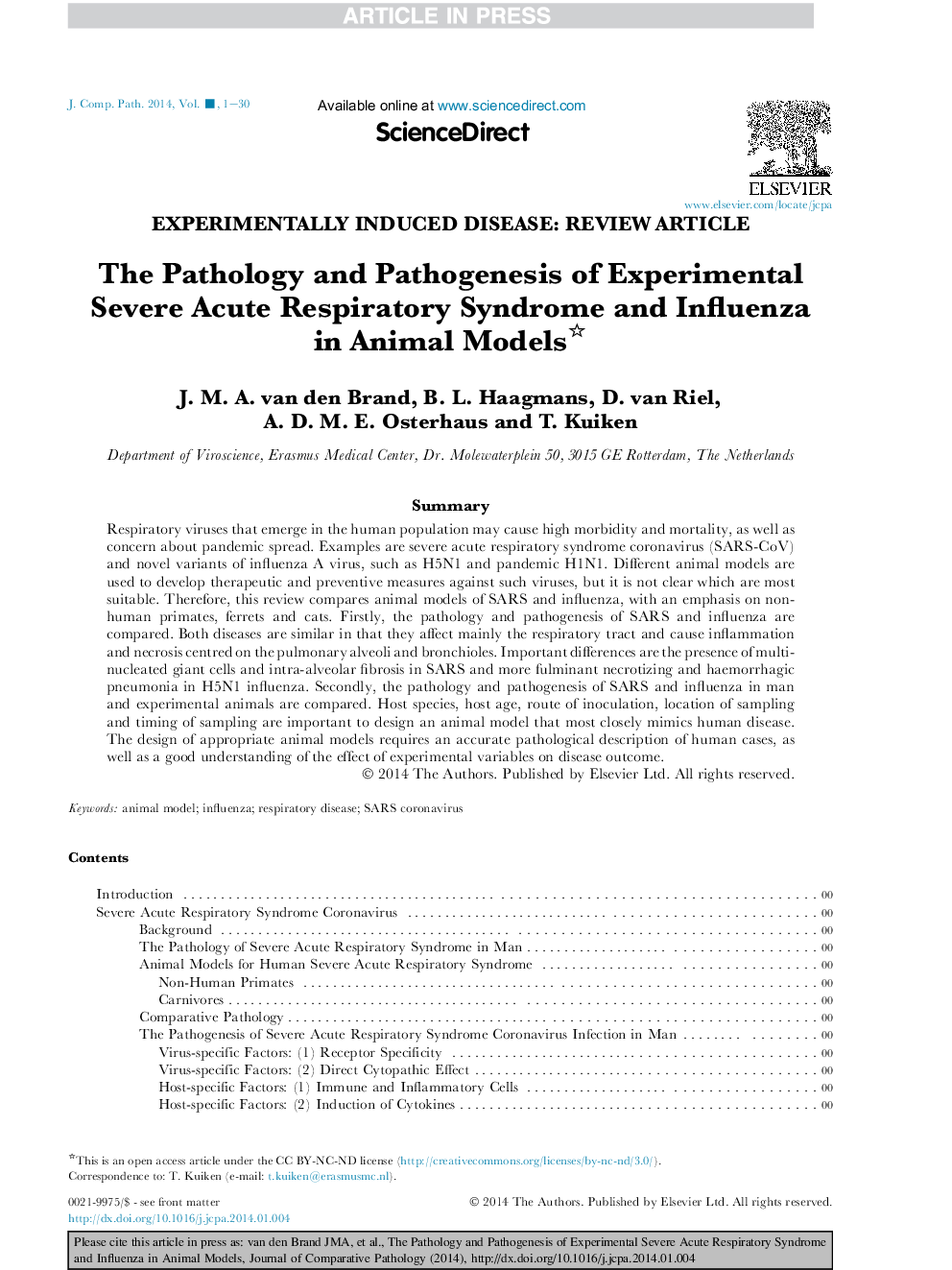| کد مقاله | کد نشریه | سال انتشار | مقاله انگلیسی | نسخه تمام متن |
|---|---|---|---|---|
| 10973036 | 1107683 | 2014 | 30 صفحه PDF | دانلود رایگان |
عنوان انگلیسی مقاله ISI
The Pathology and Pathogenesis of Experimental Severe Acute Respiratory Syndrome and Influenza in Animal Models
ترجمه فارسی عنوان
آسیب شناسی و پاتوژنز سندرم حاد تنفسی حاد و تجربی در مدل های حیوانی
دانلود مقاله + سفارش ترجمه
دانلود مقاله ISI انگلیسی
رایگان برای ایرانیان
کلمات کلیدی
موضوعات مرتبط
علوم زیستی و بیوفناوری
علوم کشاورزی و بیولوژیک
علوم دامی و جانورشناسی
چکیده انگلیسی
Respiratory viruses that emerge in the human population may cause high morbidity and mortality, as well as concern about pandemic spread. Examples are severe acute respiratory syndrome coronavirus (SARS-CoV) and novel variants of influenza A virus, such as H5N1 and pandemic H1N1. Different animal models are used to develop therapeutic and preventive measures against such viruses, but it is not clear which are most suitable. Therefore, this review compares animal models of SARS and influenza, with an emphasis on non-human primates, ferrets and cats. Firstly, the pathology and pathogenesis of SARS and influenza are compared. Both diseases are similar in that they affect mainly the respiratory tract and cause inflammation and necrosis centred on the pulmonary alveoli and bronchioles. Important differences are the presence of multinucleated giant cells and intra-alveolar fibrosis in SARS and more fulminant necrotizing and haemorrhagic pneumonia in H5N1 influenza. Secondly, the pathology and pathogenesis of SARS and influenza in man and experimental animals are compared. Host species, host age, route of inoculation, location of sampling and timing of sampling are important to design an animal model that most closely mimics human disease. The design of appropriate animal models requires an accurate pathological description of human cases, as well as a good understanding of the effect of experimental variables on disease outcome.
ناشر
Database: Elsevier - ScienceDirect (ساینس دایرکت)
Journal: Journal of Comparative Pathology - Volume 151, Issue 1, July 2014, Pages 83-112
Journal: Journal of Comparative Pathology - Volume 151, Issue 1, July 2014, Pages 83-112
نویسندگان
J.M.A. van den Brand, B.L. Haagmans, D. van Riel, A.D.M.E. Osterhaus, T. Kuiken,
